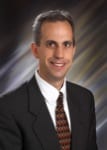It’s time for some changes at Lycoming Engines.
The past few years were spent stabilizing the company and re-establishing it as a leader in the market. Now it’s time for growth, says Michael Kraft, who recently took over as senior vice president and general manager with the promotion of Ian Walsh to Chief Innovation Officer at parent company Textron.
 The transition is “going well,” according to Kraft, who notes the company has a great management team. “The work that Ian did also makes it easier to transition. I’ve inherited a stable organization, which allows me to concentrate on my agenda.”
The transition is “going well,” according to Kraft, who notes the company has a great management team. “The work that Ian did also makes it easier to transition. I’ve inherited a stable organization, which allows me to concentrate on my agenda.”
And that agenda is summed up in just a few words: “Growth and new product development,” Kraft says.
The centerpiece of that growth is the iE2, Lycoming’s electronic engine control system, which was introduced at this summer’s AirVenture. The system is now being tested on a TEO-540-EXP-powered Lancair Evolution. The 350-hp twin-turbocharged TEO-540-A1A is the first iE2 engine model planned for FAA certification. Prior to certification, an experimental version will be available as an option for experimental aircraft.
“The logical evolution is to apply the iE2 to other engine models,” Kraft says. “We will address the turbocharged models first, since they are more complicated to fly.”
Kraft, who served as Lycoming’s vice president of research, development and engineering before his promotion, emphasizes that the iE2 is “truly a single lever operation, even up to the cowl flap control.”
The system provides automated preflight safety checks and automotive start simplicity. It also promises to increase fuel efficiency, reliability, and make alternative fuel consumption possible without major hardware changes, protecting the customer’s investment, Walsh said when he unveiled the technology this summer.
As the iE2 was being developed, Lycoming engineers realized that it would have to adapt to new fuels as 100LL is replaced. The software was developed with the ability to adapt to those new fuels, according to Kraft, who explains that the software contains fuel maps for octane ratings and other fuel characteristics that affect timing, power output and other engine functions. “The new technology has multiple fuel map capabilities, so it can be adapted to different fuels,” he says.
It also has “closed loop control,” which means that if a fuel with a lower octane rating is put in an engine, that engine can adapt to protect itself, he says.
“We don’t know what the next avgas will be, but the technology is there to adapt to the new fuel,” he says. “In a world of uncertainty, this future technology gives an aircraft owner faith that the value of his asset won’t deteriorate.”
Lycoming is very active in the search for alternative fuels. It has representatives on the ASTM avgas subcommittee, as well as the synthetic fuels committee. Testing also continues in Lycoming’s unleaded automotive gasoline program for its O-360 and IO-360 engines. The intended fuel is the unleaded 93 AKI automotive gasoline, which conforms to either Euro Norm EN228 or ASTM D4814.
Work also continues on Lycoming’s partnership with the FAA and Swift Enterprises to research the use of 100SF, a renewable fuel being developed by Swift Enterprises of West Lafayette, Ind., as a possible replacement for 100LL. Swift Enterprises’ goal is to develop a renewable fuel to replace 100LL without requiring modifications to existing engines.
“We’re very active in the search for alternative fuels,” Kraft says. “The legacy fleet is so large and the segment is so dependent on 100LL that any type of migration program off 100LL must consider the economic impact. It will be severe. We estimate it to be in the billions of dollars. Lycoming’s position is that there needs to be a migration program.
“The new technology can help, but the economic impact will be considerable however we move forward,” he continues.
The company has been very active in letting pilots know about these efforts by holding forums at fly-ins, flying club gatherings and at shows like Oshkosh, he adds.
The new head of Lycoming also would like pilots to know that the while things are changing at the company, it is change for the good.
“The Lycoming reputation is built upon a bullet-proof scenario,” he says. “Pilots can count on Lycoming, which produces a very predictable powerplant.”
That predictability created a perception about the company as being “conservative in product development, he acknowledges.
“I think pilots will now see that bullet-proof product with the new technology wrapped around it,” he says. “I’m quite certain that it’s going to be an exciting ride in the future and Lycoming wants to be on that ride.”
ALSO IN THE WORKS
Oshkosh also marked the debut of the first IO-233-LSA light sport engine installation. T&T Aviation of Washington, Pa., displayed its Falcon LSA at the Lycoming exhibit. After Oshkosh, on-wing ground, taxi and flight testing with the IO-233-LSA began. The engine is designed to run on gasoline. The company expects to start shipping non-certified IO-233s in the fourth quarter of 2009. Engine certification is slated for the first quarter of 2010.
Also getting a lot of attention is the company’s Echelon STC program, which offers powerplant upgrades to customers.
“Our philosophy is that there is a great legacy fleet out there,” Kraft says. “People are still active in their aircraft and are opting to upgrade.”
The first STC is for the IO-390-A1A6, an upgrade for customers now flying with IO-360 engines.
A BIT OF BACKGROUND
Kraft, who holds bachelor’s and master’s degrees in aeronautics and astronautics from the Massachusetts Institute of Technology, joined Lycoming after tenures in engineering and management at Andritz, GE Power Systems and GE Aircraft Engines.
For more information: Lycoming.com.
